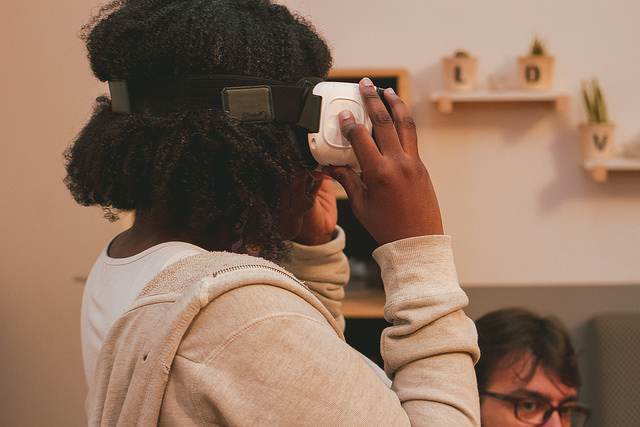Assessing and diagnosing ADHD in children is a complex process that involves more than the observation of a specific number of its symptoms. Making a definitive diagnosis of ADD is complicated, if for no other reason than it is not physically possible for a psychologist, psychiatrist, or physician to watch a child across enough situations and over the course of enough time (six months minimum) to make an accurate diagnosis without the subjective opinions of others (based upon behavioral rating scales) who monitor the child.
Psychologists do have tools, such as continuous performance tests, that can measure sustained attention and impulsivity, but they are used in an artificial environment. But what if we had an assessment tool that systematically observed children in their natural environment and could measure sustained attention, impulsivity, and distractibility?
We are getting close.
An increasing number of researchers believe that we are ready for virtual reality (VR) assessment of ADHD. This makes sense on many levels, particularly when we view ADHD through the lens of the DSM-V, where a set of observable symptoms occurring over the course of time and across situations defines ADHD. (I need to comment that many psychologists disagree with the American Psychiatric Association and view ADHD as a disorder of executive functioning and the DSM-V criteria as explaining only a portion of the ADHD impairment). Virtual reality assessment uses some of the tools developed for in-office psychological testing of ADHD but places children in a more realistic environment that mimics the demands of home and school.
VR has become increasingly realistic and immersive, so the feedback to the user based upon their position and orientation is more complete and timely. Newer VR tools can recreate tasks that resemble the demands from the real world and use built-in trackers that can also measure sustained attention, focus, and impulsivity in a more objective fashion. So as children travel through their virtual environment we can measure what they are doing, how they pay attention, and how efficient they are in completing tasks. VR could in effect be the proverbial ”fly on the wall” that would be our best tool for formally assessing ADHD.
Studies show that cognitive performance obtained via virtual reality tends to be poorer than that collected through classical computerized assessments, suggesting that the tasks embedded in virtual reality have an increased level of complexity and difficulty and require additional cognitive resources. As a child clinical psychologist this make sense to me when I consider how core neuropsychological tools such as the Trail Making Test or the Affect Recognition Test of the NEPSY-II often measure a single skill in isolation. Rather than assessing a construct (for example, sustained attention by clicking on a keyboard space bar – a classic CPT/continuous performance test), VR has the capacity to create a sustained attention task in a virtual classroom, replete with distractions, challenges, and other familiar features of school. Research indicates that VR has increased ecological validity, so that results from a VR assessment better predict behavior in real-world settings. Interestingly, there are mixed data as to whether children are more engaged in the VR than with the traditional CPT.
In sum, the studies examining VR as an assessment tool for evaluating ADHD suggest that it is at least as good, if not better than, traditional continuous performance tools used to evaluate ADHD. Children with ADHD demonstrate similar rates of omission errors (inattention) and commision errors (impulsivity) on VR tools as with classic measures. Children with ADHD also demonstrate characteristic slow and variable reaction times with the VR tools. In addition, current VR tools can introduce distractors, making them more realistic than traditional office-based testing, and VR iterations promise much more realism.
However, before VR is ordained as a magical tool to assess ADHD, it is imperative for us to recognize that most children with ADHD have comorbid issues that cannot be measured by current VR technologies or cured by a diagnosis or a pill. Conservative estimates suggest that 25% of children with ADHD also display an Anxiety Disorder, while 40% have a Learning Disability. Well over 50% of children who meet the ADHD criteria also display a variety of executive-functioning difficulties that, left untreated, will result in lowered school performance and ongoing personal struggles.
While I look forward to the day when VR is readily available as a tool to aid in assessing ADHD, I believe that a comprehensive and thoughtful ADHD evaluation still requires obtaining a detailed family and developmental history; in-office or, better yet, classroom observations over a series of encounters; parent and teacher behavioral ratings; and a thorough cognitive and neuropsychological evaluation. Perhaps some day we will create a VR assessment that can also directly assess intellectual, executive-functioning, and social/emotional skills.
Featured image: Flickr user Olabi Makerspace




